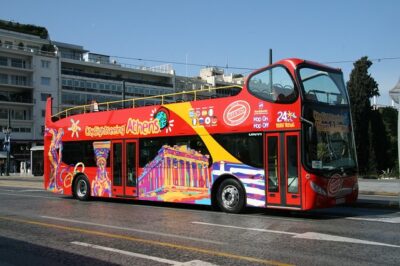The pandemic has certainly slowed some things down if not stopped them completely, but what has been on the fast track are digital innovations like virtual tours and contactless interactions.
Travelers, especially Millennial travelers, have been pushing travel providers and tourist attractions to increase digital interactivity. It finally took everyone staying at home to get them to roll out new digital experiences, and for new companies to leap to the forefront with new innovations.
Or as we like to think of them, inno-vacations.
Sorry.
(Not really.)
And now that it’s happened, companies are coming out with some amazing new offerings.
 Questo is an app that lets people explore 60+ cities in 15 countries around the world as they follow clues and solve puzzles, creating your own personal tours. You can visit Paris, Berlin, Budapest, Dublin, Bucharest, Barcelona, London, and New York, just to name a few. You can use the app to explore these cities and have some fun figuring out the story that’s playing out on your screen in that city. Since the pandemic, Questo has been able to spread to new cities, with new stories, such as the story of Jack the Ripper in London, England.
Questo is an app that lets people explore 60+ cities in 15 countries around the world as they follow clues and solve puzzles, creating your own personal tours. You can visit Paris, Berlin, Budapest, Dublin, Bucharest, Barcelona, London, and New York, just to name a few. You can use the app to explore these cities and have some fun figuring out the story that’s playing out on your screen in that city. Since the pandemic, Questo has been able to spread to new cities, with new stories, such as the story of Jack the Ripper in London, England.
Disney has reduced their capacity and they’re now requiring visitors to specify the park and day of their visit once they purchase a ticket. No more park hopping or leaving your schedule up in the air. This may sound inconvenient, but it avoids overcrowding and lets people enjoy the park more safely than the usual holiday crowds. They even have contactless menus at their restaurants where you use a QR code scanner to pull up their menus on your smartphone.
Similar technologies and procedures are being used by other tours and attractions. For example, museums and historic properties are using the same technologies and practices to ensure their visitors stay safe.
Divento provides museums, historic sites, heritage sites, and tourist attractions with a way to sell digital tickets. Attendees can choose a time slot and show up to an attraction with a reservation, rather than having overcrowding or turning away disappointed visitors.
Realife Tech normally helps large venues — stadiums, concert venues, arts festivals — personalize fan experiences, and are now offering the COVID Safety Hub, an app that minimizes fear “through dedicated messaging, features, and protocols that help mitigate risk for all attendees.
Wishtrip makes it possible for guests to talk to staff, get directions in and out of venues, and receive push notifications in case of overcrowding or other special messages. This can all happen while the users are at the venue as a way to provide preventative measures.
And Data Duopoly helps companies confirm that visitors are evenly distributed throughout the venue without a lot of clustering and crowding.
Meanwhile, on the tech-wearable-meets-contactless-ID front, Connect&GO provides wearable gear, such as wristbands with built-in radio frequency identification (RFID) tags that venues can use for payments, online and mobile ticketing, capacity and access control.
Many companies are innovating and finding new ways for travel providers to offer limited access, contactless interaction, and even new products and games for their guests. If you’ve got a mobile phone and a willingness to try something new, you can find all kinds of venues, attractions, and sites that are letting people return and enjoy what they have to offer. All you need is a mask and a smartphone, and you can start embracing this new digital future.
Have you used any of these technologies on your tours and vacations? Is this something you’re looking forward to or are you still waiting to see how everything shakes out? Share your thoughts with us on our Facebook page, or on our Twitter stream. You can also find us on our Instagram page at @TravelproIntl.
Photo credit: PublicDomainpictures (Pixabay, Creative Commons 0)
